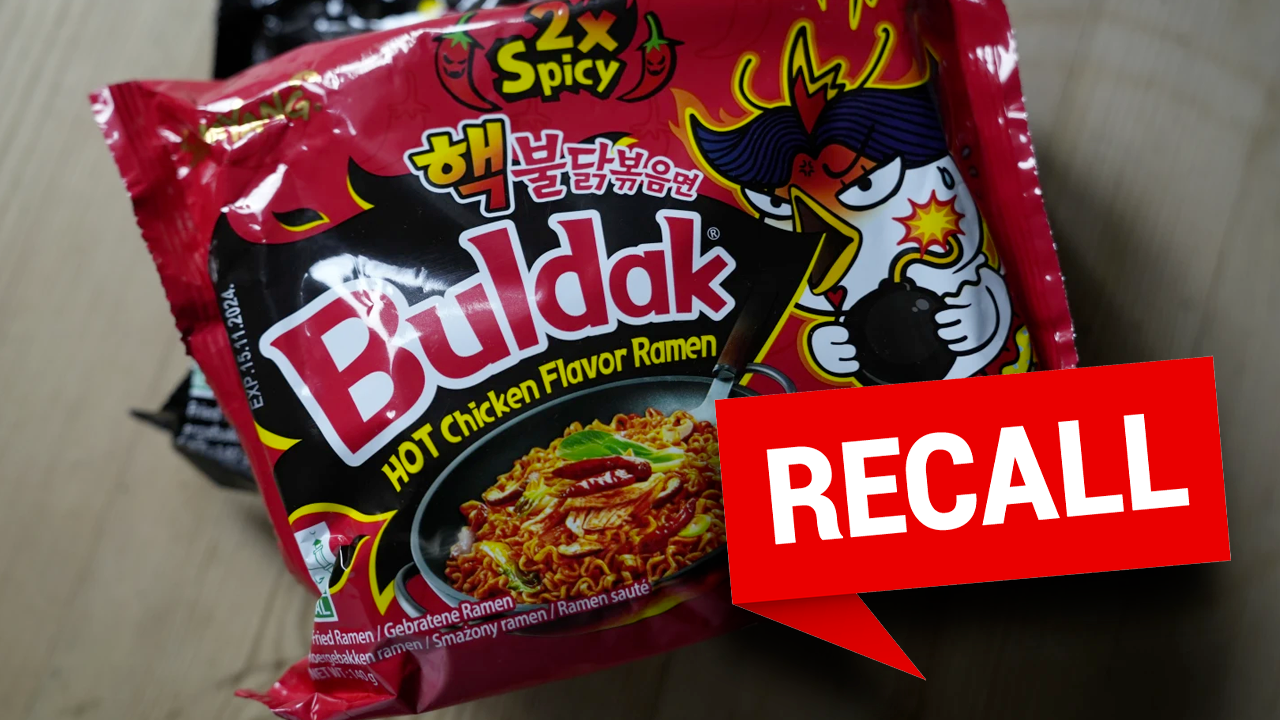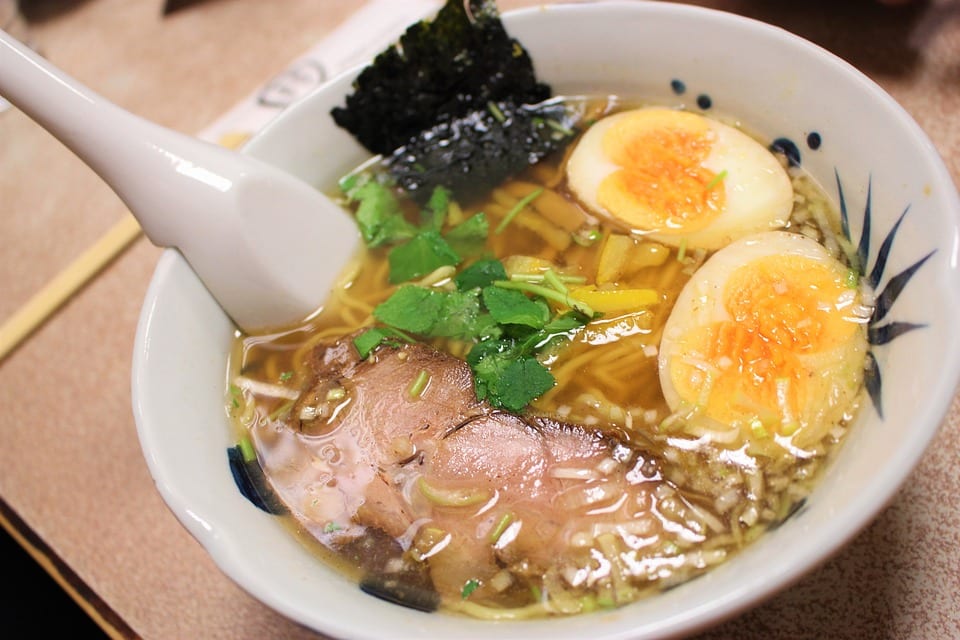Urgent: Is Your Ramen Safe? A Guide To The Ramen Recall Now!
Have you ever wondered if that steaming bowl of instant ramen you're about to enjoy could actually be a health hazard? Recent unsettling news regarding ramen recalls has indeed sparked considerable anxiety among loyal consumers globally. As one of the most globally consumed convenience foods, a recall impacting ramen directly ripples through the food industry and the lives of countless individuals who depend on it for a quick, affordable meal. This report dives deep into the specifics of these recalls, identifying the brands implicated and detailing crucial safety measures consumers should take to safeguard their well-being. Our commitment is to deliver fact-based information, empowering you to make knowledgeable and secure choices concerning what you eat.
Within this detailed exploration, we'll dissect the different layers of the ramen recall issue, examining how it erodes consumer confidence and presenting strategies for distinguishing safe products from potentially dangerous ones. In light of this rapidly unfolding situation, remaining informed is paramount to protecting both yourself and your loved ones from the latent health threats linked to tainted food products. Moreover, we will delve into the broader ramifications of food recalls in general, elucidating the steps you can take as a vigilant consumer to guarantee your personal safety.
| Aspect | Details |
|---|---|
| Keyword Emphasis | The term "ramen recall" is central to this discussion. |
| Part of Speech | "Recall," in this context, primarily functions as a noun, referring to the action of recalling products from the market. |
| Primary Focus | Understanding the reasons, impacts, and preventative measures related to ramen recalls. |
| Related Information | U.S. Food and Drug Administration (FDA) |
Furthermore, we are set to offer insights into the intricate ramen manufacturing process and illuminate the pathways through which recalls can unexpectedly occur. Acquiring a strong grasp of these underlying factors can significantly deepen your comprehension of the complexities surrounding food safety and highlight the indispensable role regulatory measures play in diligently protecting public health. Lets embark on a comprehensive journey into the world of ramen recalls, arming you with the critical knowledge you urgently require.
- Breaking Nissin Ramen Recall 2024 What You Need To Know
- Prudence Murdoch From Media Heiress To Philanthropic Leader Unveiled
- What is a Ramen Recall?
- Reasons for Ramen Recall
- Brands Involved in the Recall
- Health Risks Associated with Contaminated Ramen
- How to Check for Ramen Recalls
- Impact on Consumer Trust
- Best Practices for Safe Ramen Consumption
What is a Ramen Recall?
A ramen recall is a formal procedure initiated when either a manufacturer or a regulatory body identifies a significant potential safety risk linked to a specific batch or production run of ramen products. This safety concern could involve several critical issues, ranging from contamination with dangerous or harmful substances to the presence of undeclared allergens or even other latent factors that could pose a direct threat to consumer health. Once an official recall is set in motion, the affected products are promptly and thoroughly removed from store shelves, and a public advisory is immediately issued, strongly urging consumers to refrain from consuming the identified products. The overarching and unwavering primary goal of a ramen recall is to rigorously protect public health and actively prevent the occurrence of foodborne illnesses that could arise from consuming unsafe ramen.
Reasons for Ramen Recall
Numerous underlying factors can instigate and necessitate a ramen recall. These factors are crucial to understanding the complexities of food safety and the potential vulnerabilities within the food production chain. Key triggers include:
- Contamination: Contamination stands out as one of the most pervasive reasons for initiating a food recall. It can arise at virtually any stage of the manufacturing process, whether due to deficiencies in the production environment, failures in quality control protocols, or even improper practices during handling and storage. The sources of contamination can be diverse, ranging from chemical agents to physical contaminants.
- Undeclared Allergens: Food allergen labeling is a cornerstone of consumer safety, particularly for individuals with known allergies. A ramen recall may become necessary if a product contains allergens such as peanuts, tree nuts, milk, eggs, soy, wheat, fish, or shellfish, and these allergens are not clearly and accurately declared on the product packaging. The presence of undeclared allergens can trigger severe allergic reactions in sensitive individuals.
- Foreign Objects: The unintentional presence of foreign materials within ramen packaging can be a cause for significant concern. These objects can include pieces of plastic, metal fragments, glass shards, or other extraneous substances that do not belong in the food product. The presence of such objects can present a serious choking hazard or pose a risk of physical injury if ingested.
- Bacterial Contamination: Bacterial contamination is a grave concern in the context of food safety. Pathogens such as Salmonella, E. coli, Listeria, or other harmful bacteria can infiltrate ramen products, potentially leading to severe foodborne illnesses. The consumption of ramen contaminated with these pathogens can result in a range of symptoms, from mild gastrointestinal distress to life-threatening conditions.
These factors underscore the importance of robust quality control measures throughout the ramen manufacturing process to mitigate the risks of recalls and safeguard consumer health.
- Mare Winningham The Untold Story Of The Star You Need To Know
- Unveiling No Te Duermas Morena Origins Meaning Todays Impact
Brands Involved in the Recall
Several prominent brands have, at various times, been implicated in ramen recalls. It is crucial to note that the specifics of these recalls can vary significantly, contingent upon the unique health risks associated with each specific product. Staying updated on press releases and announcements from these brands is indispensable to maintaining consumer awareness. Some of the notable brands that have faced ramen recalls include:
- Nissin Foods
- Maruchan
- Paldo
- Samyang Foods
Consumers should remain vigilant and proactively seek information regarding specific recalls linked to these brands to ensure their safety.
Health Risks Associated with Contaminated Ramen
Consuming ramen products that have been contaminated can expose individuals to a range of potentially serious health risks. These risks are multifaceted and can vary in severity, depending on the nature of the contamination. Some of the primary health risks associated with contaminated ramen include:
- Food Poisoning: Food poisoning, also known as foodborne illness, is a common and concerning consequence of consuming contaminated ramen. The symptoms of food poisoning can manifest in various ways, encompassing nausea, vomiting, diarrhea, abdominal pain, and fever. In severe cases, food poisoning can lead to dehydration, electrolyte imbalances, and the necessity for hospitalization.
- Allergic Reactions: The presence of undeclared allergens in ramen products poses a significant threat to individuals with food allergies. Allergic reactions can range from mild symptoms such as skin rashes and itching to severe and potentially life-threatening conditions like anaphylaxis. Anaphylaxis requires immediate medical intervention and can be fatal if not promptly treated.
- Long-term Health Effects: Certain foodborne pathogens have the potential to trigger long-term health issues, even after the initial symptoms of food poisoning have subsided. For instance, some strains of E. coli can lead to hemolytic uremic syndrome (HUS), a severe condition that can result in kidney failure. Other pathogens may contribute to the development of reactive arthritis, a chronic joint inflammation that can persist for months or even years.
These health risks underscore the critical importance of adhering to food safety guidelines and exercising caution when consuming ramen products.
How to Check for Ramen Recalls
Remaining well-informed about food recalls is of paramount importance, as it directly impacts your ability to safeguard your health and the health of your family. To stay up-to-date and informed about ramen recalls and other food safety alerts, consider taking the following proactive steps:
- Visit the official website of the U.S. Food and Drug Administration (FDA) or your countrys food safety authority. These websites serve as authoritative sources for information on food recalls, providing timely updates and detailed information about affected products.
- Check the brand's website for any announcements regarding recalls. Many food manufacturers maintain a dedicated section on their websites for recall announcements. Regularly visiting the websites of your preferred ramen brands can help you stay abreast of any potential issues.
- Sign up for recall alerts from trusted food safety organizations. Numerous organizations and agencies offer email or text message alerts that notify you of food recalls and other safety concerns. Subscribing to these alerts ensures that you receive prompt notifications when recalls are issued.
By diligently monitoring these sources and staying informed, you can take proactive measures to protect yourself and your loved ones from potentially unsafe ramen products.
Impact on Consumer Trust
The occurrence of food recalls, including ramen recalls, can have a profound and far-reaching impact on consumer trust in food brands and the food industry as a whole. When a brand is compelled to recall a product, it inevitably raises significant concerns among consumers regarding the safety and overall quality of the brand's entire product line. The perception of safety and quality is fundamental to consumer loyalty, and a recall can erode this trust. To effectively restore consumer confidence and regain their trust, companies must embrace and implement comprehensive transparency measures. These measures include:
- Providing clear and easily understandable information about the recall. Companies should communicate openly and honestly about the reasons for the recall, the potential risks associated with the affected products, and the specific steps consumers should take to protect themselves.
- Explaining how the issue occurred and what steps are being taken to prevent future problems. Transparency requires that companies provide insights into the root causes of the recall and outline the measures they are implementing to prevent similar incidents from happening again. This demonstrates a commitment to learning from mistakes and enhancing food safety practices.
- Offering refunds or replacements for affected products. Providing consumers with refunds or replacements for recalled products is a tangible way to demonstrate a commitment to customer satisfaction and to compensate for any inconvenience or concern caused by the recall.
By prioritizing transparency and taking proactive measures to address consumer concerns, companies can work towards rebuilding trust and maintaining positive relationships with their customers.
Best Practices for Safe Ramen Consumption
To ensure your safety and minimize potential health risks when consuming ramen, it is advisable to adhere to the following best practices:
- Always check for recalls before purchasing or consuming ramen products. Before buying or preparing ramen, take a moment to check for any recent recall announcements. You can do this by visiting the FDA website, the brand's website, or subscribing to recall alerts.
- Read ingredient labels and allergen warnings carefully. Pay close attention to the ingredient list and allergen warnings on the packaging. If you have food allergies or sensitivities, ensure that the product does not contain any ingredients that could trigger a reaction.
- Store ramen in a cool, dry place to prevent contamination. Proper storage is essential to prevent the growth of harmful bacteria and the spoilage of ramen products. Store ramen in a cool, dry place away from direct sunlight and moisture.
- Practice proper food handling and cooking techniques. Follow the cooking instructions on the packaging carefully. Ensure that the ramen is cooked thoroughly to kill any potential pathogens. Avoid cross-contamination by using separate utensils and cutting boards for raw and cooked foods.
By following these best practices, you can significantly reduce the risk of consuming contaminated ramen and protect your health.
- The Truth About Ramen Noodles Death 2024 Are They Safe
- Ali Macgraw The Untold Story And Enduring Legacy Revealed

239,000 rice ramen noodle soup cups recalled due to fire, burn hazard

Country's food police recall various types of instant noodles for being

Ramen Recall 2024 Lexus Ree Lenora